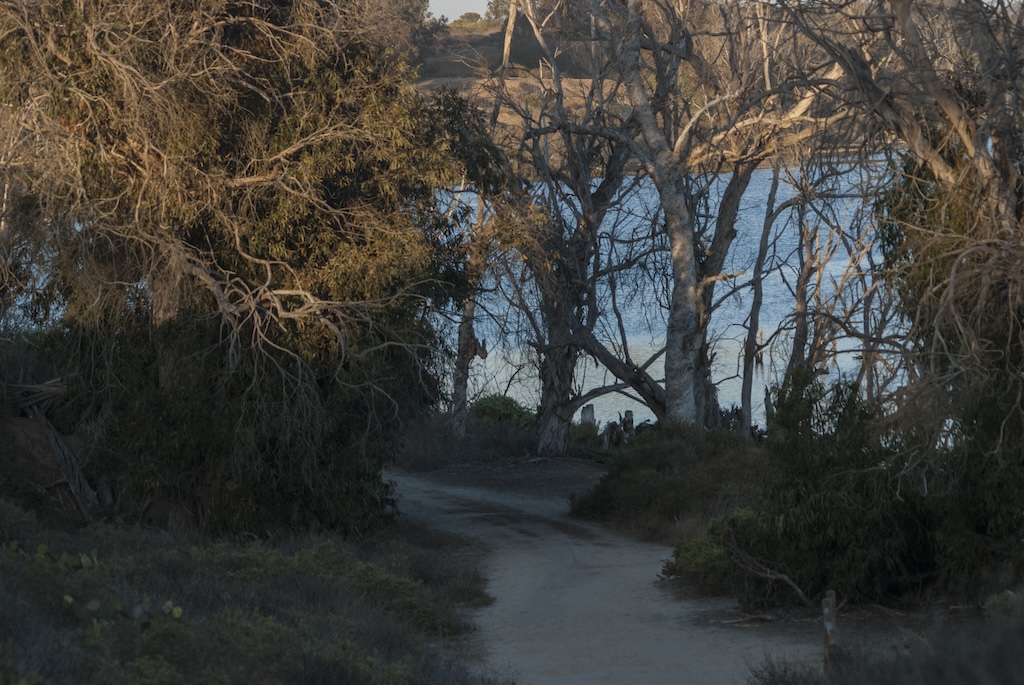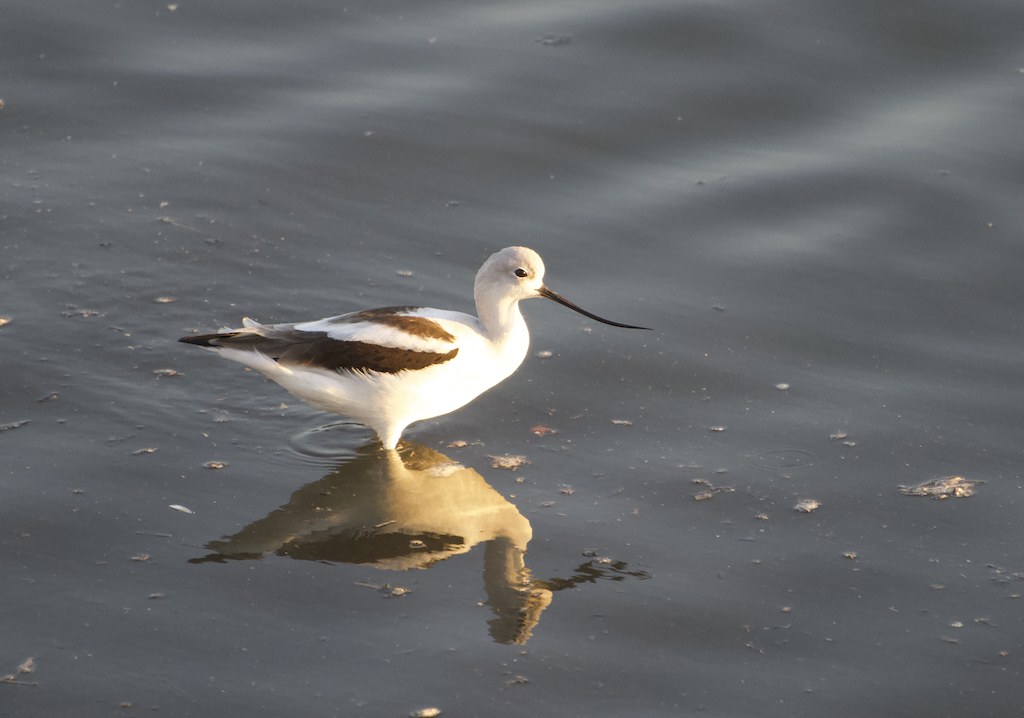
Time moves differently in wild places. I discovered this truth during the years I spent hiking and photographing Bolsa Chica Ecological Reserve, from August 2013 until December of 2018. I had a short break in the month of January 2015, when my mother passed away, my biggest fan of my work.
Those weren’t just visits — I lived and breathed that landscape until it became as familiar to me as my own reflection in the puddles of water after a rainfall.
The reserve became my sanctuary during those years. Four to five times a week I would arrive before sunrise, camera equipment weighing heavy on my shoulders and around my neck, as I would make my way up the steep trails that offered sweeping views of the Pacific. The ocean spread out in front of me like a sheet of hammered silver in the early morning light, while fog would sometimes roll in from the water, wrapping the wetlands in layers of gray silk.
I learned to read this place like a good book. Every turn in the trail held its stories: the prarie dogs network of burrows that dotted the hillsides, the massive rattlesnake that claimed one particular bend in the path as its sunning spot, the scattered California White Sage plants that released their sharp, clean scent when crushed with the hand. The colony of Great Blue Herons that returned to the same nesting site year after year to raise their young.
The early mornings became a ritual. I would find a spot at the edge of the wetlands, settle in, and wait. The American Avocets would arrive with the light, their long legs moving slowly through the shallow water as they probed for breakfast. The Ospreys circling overhead, their keen eyes searching the water for fish, while the Peregrine Falcon rode the updrafts along the cliffs, their presence sending fear through the smaller shorebirds below.

Sometimes, in that early morning time I would watch a band of coyotes making their way back from the nights hunt. They headed toward their den in the open field where they would sleep away the day. Their presence was a reminder that this place, despite being surrounded by suburbia, still held its wild heart. Photography became more than just capturing images — it was a way of seeing, of truly noticing the intricate dance of life that played out before me.Every visit revealed something new: the way the light caught the wings of a hovering kestrel, watching the Snowy Egret’s reflection broken as it struck the water to spear a fish.
Occasionally, I would encounter other photographers. We were a loose tribe, gathering briefly to share stories and admire each other’s gear before drifting apart again, and get back to our solitary observations. These rare encounters were like touching base with others who understood the pull of this place, who recognized that sometimes the best shot was the one you didn’t take, content instead to simply watch.
The reserve has changed over the years, subjected to what developers call progress. The trails are now shorter and the wild spaces are more contained. Yet nature persists, adapting as it always has. The birds still return, the coyotes still hunt and the sage still grows. The wetlands continue their ancient rhythm of tide and time.
Looking back, I realize had it not been for those years at Bolsa Chica, much of my life would have lacked depth and texture. The reserve taught me patience, the value of stillness, and the art of really seeing what’s in front of me. It showed me that nature speaks constantly — through light and shadow, through the movement of wings and water, through the changing of seasons — if we take time to listen and watch.
For more than fifty years, my camera has been my companion in exploring the natural world. But the years spent there stand apart. A masterclass in the art of paying attention, in understanding that every moment in nature is both unique and part of an endless cycle. The photographs I made there are more than snapshots, they’re documents of time spent in conversation with a place that became part of my own story.
The trails may be shorter now, but the lessons remain: that wild places matter, that nature’s resilience is both fragile and fierce, and that sometimes the most profound experiences come from simply showing up, day after day, to witness life unfold in all its form.
Leave a Reply